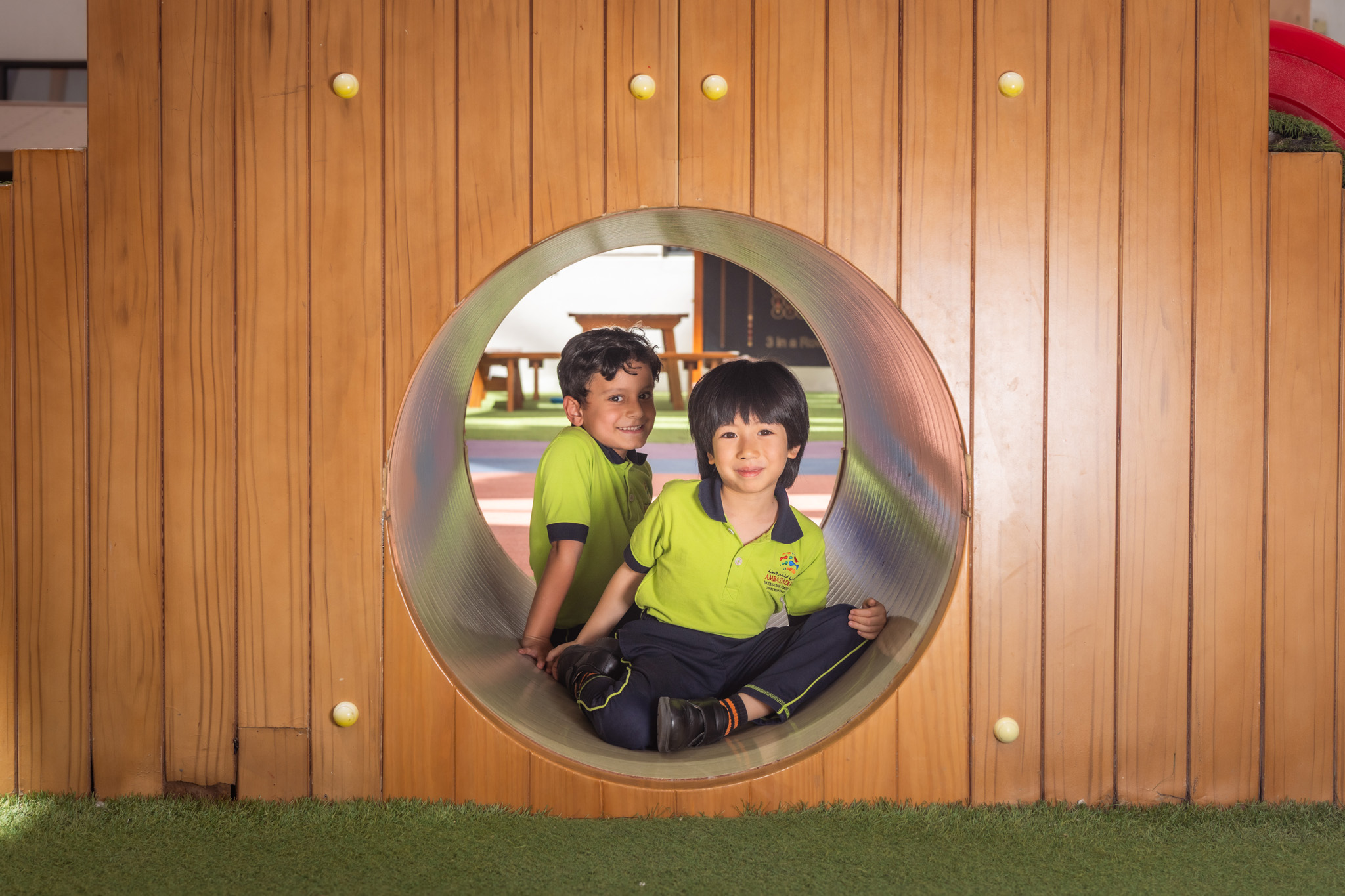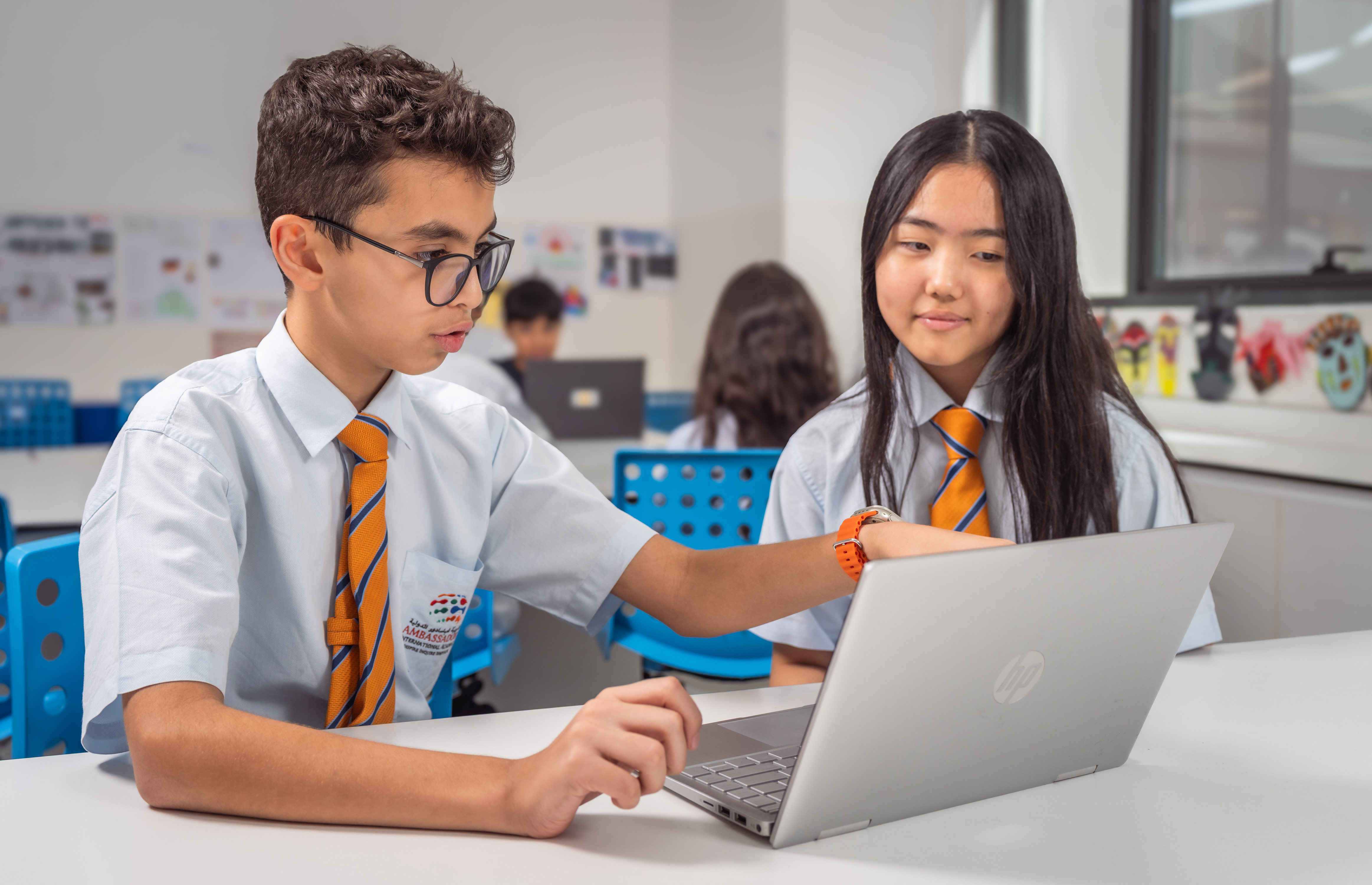Establishing a classroom environment that encourages collaborative learning not only develops a student’s academic confidence and self-confidence but also enables a dynamic classroom where teachers encourage their students to take charge of their learning journey. The Ambassador International Academy is one of the best schools in Dubai that places great importance on collaborative learning among our students. Keep reading below to learn more about how schools can shape collaborative learning in their classrooms.
What is Collaborative Learning?
According to Intrepid Learning, collaborative learning can be defined as a learning style that allows learners to ask questions, source answers from their fellow peers and teachers alike, hear what others have to say, and ask their own questions. Collaborative learning is a process that encourages a shared learning journey with others and is ideal for group projects or a peer-to-peer learning approach.
Why Should Schools Consider Collaborative Learning?
Students who are exposed to a collaborative learning style tend to enjoy a deeper and more engaging learning experience. Because collaborative learning is useful not only in classroom teaching and learning but also in everyday life, this learning style is highly valued by some of the best schools in Dubai, including the Ambassador International Academy. Students who learn collaboratively with their peers are able to clarify, build on, discuss and develop ideas with their peers, becoming critical thinkers with strong problem-solving skills.
Some reasons why the best schools in Dubai utilise collaborative learning include the following:
- It develops higher-level thinking and leadership skills.
- Students who learn collaboratively become more self-confident, academically strong, boast higher self-esteem and develop a higher level of responsibility.
- Collaborative learning exposes students to a more diverse way of life and thinking about various topics, cultures, concepts and other factors within education, everyday life, their community and beyond.
- Students are better prepared for further education, employment and real-life social interactions where working with others and making rational decisions are highly valued.
How Can Schools Incorporate Collaborative Learning?
There are so many creative ways to implement collaborative learning in your classrooms. One of the ways to introduce collaborative learning includes implementing peer and group work early on so that students know what to expect from each other and how to conduct themselves during the process. Be sure to establish some ground rules when you start, and get students involved in the process by asking them to suggest some rules too.
Teachers looking to encourage collaboration should aim for mid-sized groups of 3 to 4 students to ensure that all students are engaged. Creating different roles for each student is a wonderful way to deconstruct larger tasks for students so as to avoid anxiety about an important project. Assign roles such as group leader, reporter, proofreader, fact-checker and so forth, and encourage students to switch up roles between themselves so that each student has a chance to be exposed to a particular responsibility.
Another way to enforce collaborative learning is to shuffle up your classroom seating arrangements. While this may seem a little scary if you’ve got an organised system in place, persevere and play around with the arrangements until you find the best solution that works for you and your students. You may also need to alter this in the following years, as what works one year may not be as effective in the following year.
Here are some ideas to try:
- The 4-square: as one of the most basic arrangements, this desk arrangement idea sees you grouping 4 desks together so students can face each other while discussing class topics and working together on group projects.
- Pairs: placing two desks alongside each other is a great way to implement collaboration and pair students together. Pairs are ideal for teachers looking to implement classroom discussion while still facing the front of the classroom - it is also great for group project classroom presentations.
- Group circles or U-shapes: this desk arrangement style is perfect for older students and larger classroom groups. Teachers who implement a lot of discussion work (as collaborative learning encourages) will do well with this style.
Collaborative learning is undoubtedly one of the most innovative learning styles utilised by some of the best schools in Dubai and beyond. The Ambassador International Academy is passionate about student collaboration and shared learning styles that encourage a diverse way of thinking, open-mindedness, critical thinking and optimal social interaction among students at school and in the world at large.
We are an IB World school that utilises the International Baccalaureate (IB) framework to shape and guide the way lessons are designed, delivered and adapted to ensure the most effective learning environment for our students.
Contact us today to learn more about our esteemed educational institution.
Reference: https://www.intrepidlearning.com/what-is-collaborative-learning



